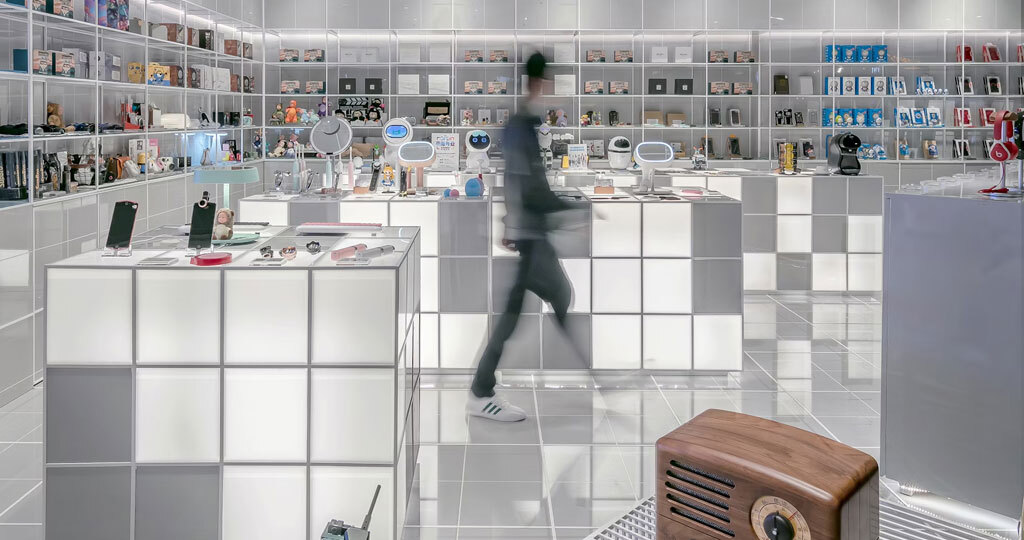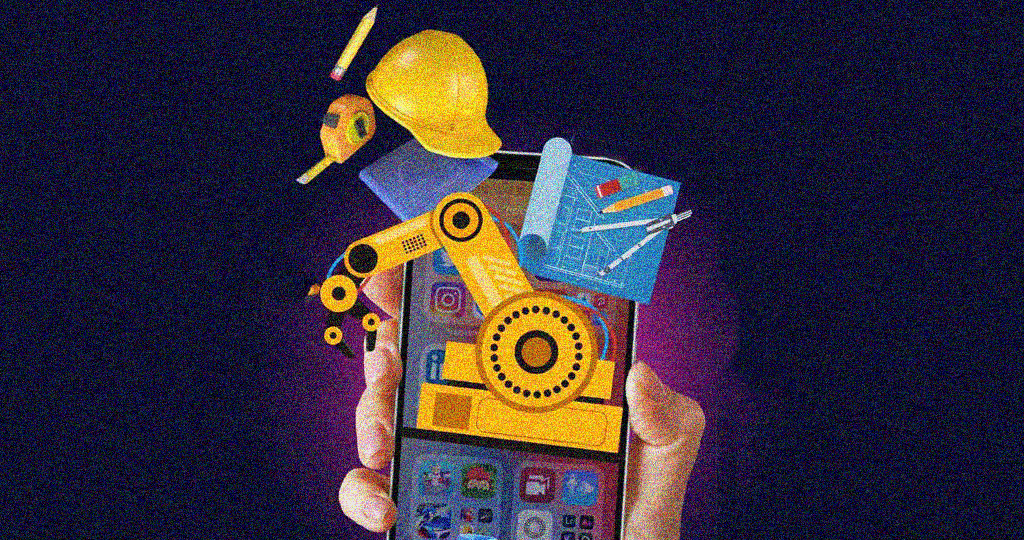Retail apps are mobile applications created for retail businesses to improve and simplify the shopping experience. They allow customers to browse products, make purchases, receive customized offers, and track their orders using their smartphones. For retailers, these apps provide essential tools for managing inventory, processing sales, offering customer service, and executing marketing strategies, ultimately enhancing customer satisfaction and streamlining business operations.
Key Takeaways
Retail apps provide 24/7 access to shopping, allowing customers to browse and purchase products at their convenience, improving overall satisfaction.
Utilizing data analytics, retail apps offer personalized recommendations and targeted promotions, enhancing customer engagement and loyalty.
Integration of technologies like AR and AI in retail apps elevates the shopping experience, offering features such as virtual try-ons and instant customer support.
Retail apps generate valuable consumer behavior data, helping businesses optimize inventory management, refine marketing strategies, and stay competitive.
The Role of Retail Apps in Modern Shopping
1. Convenience and Accessibility
Retail apps redefine convenience by offering 24/7 access to shopping, allowing users to browse and purchase products at their convenience. This flexibility eliminates the limitations imposed by traditional store hours, catering seamlessly to the needs of today's busy consumers.
2. Personalized Shopping Experience
Harnessing sophisticated data analytics, retail apps deliver personalized experiences tailored to individual preferences. By analyzing user behavior and purchase history, these apps curate product recommendations and deliver targeted notifications, enhancing user engagement and satisfaction. When you put your customer first in providing user experiences, you ensure that every interaction is meaningful and personalized, thereby fostering a stronger connection and loyalty.
3. Enhanced Customer Engagement
Retail apps serve as powerful tools for direct customer engagement. Through features like in-app messaging and push notifications, businesses can communicate with their audience in real-time, delivering updates on promotions, new arrivals, and personalized offers. Additionally, integrated feedback mechanisms empower users to provide insights, fostering a continuous improvement cycle for service and product offerings.
4. Integration of Advanced Technologies
The integration of cutting-edge technologies such as augmented reality (AR) and artificial intelligence (AI) elevates the shopping experience to new heights. AR enables users to visualize products in their own environment before making a purchase, while AI-powered chatbots provide instant assistance, addressing customer queries promptly and efficiently.
5. Seamless Omnichannel Experience
Retail apps seamlessly integrate online and offline shopping channels, offering features like click-and-collect and real-time inventory updates. This omnichannel approach allows users to switch between different modes of shopping effortlessly, ensuring consistency and convenience across all touchpoints.
6. Increased Customer Loyalty and Retention
By incorporating loyalty programs and gamification strategies, retail apps incentivize repeat purchases and cultivate customer loyalty. Exclusive rewards, personalized discounts, and engaging gamified elements enhance user retention, fostering long-term relationships with the brand.
7. Data-Driven Insights
Retail apps generate valuable data on consumer behavior and preferences, empowering businesses with actionable insights. By analyzing this data, retailers can optimize inventory management, refine marketing strategies, and anticipate market trends, thereby staying competitive in a rapidly evolving landscape.
8. Secure and Streamlined Transactions
Ensuring the security of transactions is paramount in retail apps. With robust encryption protocols and secure payment gateways, these apps safeguard user data and facilitate seamless transactions. Features like saved payment methods and simplified checkout processes further enhance user convenience, minimizing friction and enhancing the overall shopping experience.
Key Features for Retail Mobile Apps
1. Personalization
Overview: Enhancing customer loyalty through tailored shopping experiences based on individual preferences and behaviors. This includes personalized recommendations, targeted promotions, and real-time updates on preferred products.
Impact: Bridges the gap between in-store and app interactions, fostering stronger customer relationships and boosting sales.
2. Integrated Loyalty Program
Overview: Seamlessly integrates a digital loyalty program into the app, eliminating the need for physical cards. Offers exclusive rewards, sweepstakes, and partnerships with CPG brands.
Impact: Increases customer retention by rewarding loyal shoppers with personalized incentives and enhancing overall engagement.
3. Intuitive Product Catalog Navigation
Overview: Provides a user-friendly interface for easy browsing and searching of products. Features include up-to-date inventory status, detailed product descriptions, and personalized content based on user preferences.
Impact: Improves customer satisfaction by ensuring product availability transparency and enhancing the overall shopping experience.
4. Rich Product Details
Overview: Offers comprehensive product information such as nutritional facts, customer reviews, specifications, and instructional videos directly accessible within the app.
Impact: Builds trust and confidence among shoppers, leading to higher conversion rates and repeat purchases.
5. Enhanced Search
Overview: Advanced search functionality that goes beyond basic keyword searches to include filters for special attributes like sales, dietary preferences, and availability across both physical stores and online inventory.
Impact: Enhances user experience by facilitating quick and precise product discovery, thereby increasing conversion rates.
6. Monetized Shopping Lists
Overview: Empowers users with feature-rich shopping lists integrated into the app. Enables adding items, viewing savings, receiving personalized recommendations, and accessing in-store navigation aids.
Impact: Improves user organization and convenience while creating revenue opportunities through sponsored listings and targeted advertising.
7. Product Scan Functionality
Overview: Allows customers to scan product barcodes via the app for instant access to detailed information, adding items to lists, checking availability, and receiving promotional offers.
Impact: Streamlines in-store shopping experiences, enhances engagement, and encourages spontaneous purchases through immediate access to product details and promotions.
8. Mobile Scan-and-Go Checkout
Overview: Enables mobile self-checkout where customers can scan and pay for items directly from their smartphones, bypassing traditional checkout lines.
Impact: Increases convenience, reduces wait times, and boosts customer satisfaction, ultimately driving repeat visits and loyalty.
9. Endless Aisle Marketplace
Overview: Expands product offerings beyond physical store inventory by enabling direct purchases from CPG manufacturers through the app.
Impact: Prevents missed sales due to out-of-stock items, enhances product variety, and allows for testing new products without committing to in-store shelf space.
10. Assistance Program Filters
Overview: Features that help customers identify products eligible for purchase through special assistance programs such as FSA, HSA, SNAP, EBT, and WIC. Includes badges, search filters, and prominent product placements.
Impact: Supports inclusivity and accessibility, broadens customer reach, and increases sales opportunities within specific demographic segments.
Why Retail App Sales Are Growing
Customer Satisfaction
Retail apps focus on making customers happier. They use personal information to suggest products that match what people like. This makes shopping more enjoyable and less stressful. Apps also speed up the buying process, so customers can quickly get what they want without waiting.
Understanding Customer Behavior
These apps are smart. They analyze how people shop and what they prefer. This helps stores predict what customers might want next. By knowing these trends, stores can manage their products better and plan marketing strategies that work.
Making Shopping Easier and Faster
Managing Orders Efficiently, Stores need to handle lots of orders smoothly. Retail apps keep track of inventory in real-time, so customers always know if something is in stock. They also offer options like picking up items in-store or getting fast delivery, which makes shopping more convenient.
Reducing Wait Times
Apps also help cut down on waiting in lines. Customers can order and pay for items through their phones, skipping long checkout lines. Apps even use virtual queuing systems to manage crowds, so customers spend less time waiting around.
Adding New Helpful Features
Retail apps are always getting better. Some use Augmented Reality (AR) to let customers virtually try out products before buying. Others use voice commands and AI assistants to help shoppers find what they need quickly and easily.
Engaging Customers More Effectively
Apps also connect with social media, allowing customers to share their purchases or get recommendations from influencers. Interactive features like quizzes or games keep customers engaged and coming back for more.
Building a Retail App: A Step-by-Step Guide
Creating a retail app can greatly improve customer experience, make operations smoother, and increase sales. Here’s a simple step-by-step guide to help you build a successful retail app:
1. Define Your Goals
Start by setting clear goals for your app. What do you want to achieve? Some common goals are:
- Engaging more customers
- Providing better customer service
- Increasing sales
- Enhancing the shopping experience
2. Research the Market
Understand your target audience and study your competitors. Focus on:
- What your customers like and dislike
- Features that popular apps have
- Current trends and future predictions
3. Plan Your App’s Features
Based on your goals and research, list the features your app needs. Common features include:
- Easy-to-use navigation
- Secure payment options
- Personalized recommendations
- Real-time inventory updates
- Customer reviews and ratings
- Push notifications
4. Choose the Right Platform
Decide whether to create a native app for iOS and Android or a cross-platform app. Consider:
- Which devices your target audience uses
- Your budget and timeline
- The user experience you want to provide
5. Develop User Interface (UI) and User Experience (UX) Design
Create simple sketches and prototypes of your app’s layout. Focus on:
- Easy navigation
- Attractive design
- Smooth user experience
- Work with designers to make sure the app looks good and is easy to use.
6. Develop the App
Break down the development into phases:
- Setting Up Servers, Databases, and APIs for Backend Development
- Frontend Development: Build the app’s user interface and connect it to the backend.
- Third-Party Services: Add features like payment gateways, analytics, and customer support.
7. Test Thoroughly
Test your app to make sure everything works perfectly:
- Perform Usability Testing to Ensure that the Application is Simple to Navigate.
- Performance Testing: Test the app’s speed and stability.
- Security Testing: Find and fix any security issues.
8. Launch the App
After testing, get ready to launch your app:
- App Store Submission: Submit your app to the Apple App Store and Google Play Store while adhering to their respective guidelines.
- Marketing Plan: Promote your app through social media, email campaigns, and other marketing strategies.
- User Feedback: Encourage users to leave feedback and reviews to improve future versions.
9. Monitor and Update
After launching, keep an eye on your app’s performance and user feedback. Regularly update your app to:
- Fix bugs
- Add new features
- Improve existing features
10. Analyze and Optimize
Utilize analytics tools to monitor user interactions within your app. Look at the data to:
- Identify which features are popular and pinpoint areas for enhancement.
- Understand what your users like and dislike
- Make the app better for increased engagement and retention
Building a retail app is a complex but rewarding process. By following these steps and staying focused on delivering a great user experience, you can create an app that meets your business goals and delights your customers.
Conclusion
Retail apps have become indispensable, offering convenience, personalization, and efficiency to both customers and retailers. By integrating advanced technologies, providing seamless omnichannel experiences, and data-driven insights, retail apps significantly enhance customer engagement and satisfaction. Building a successful retail app involves careful planning, thorough market research, and a focus on delivering a smooth user experience.
At Way2Smile Solutions, we develop innovative retail mobile apps for businesses. We deliver retail mobile app development solutions that enhance user experiences and boost customer loyalty. Our team of skilled mobile app developers and designers ensures that every app we create is intuitive, secure, and optimized for performance.







